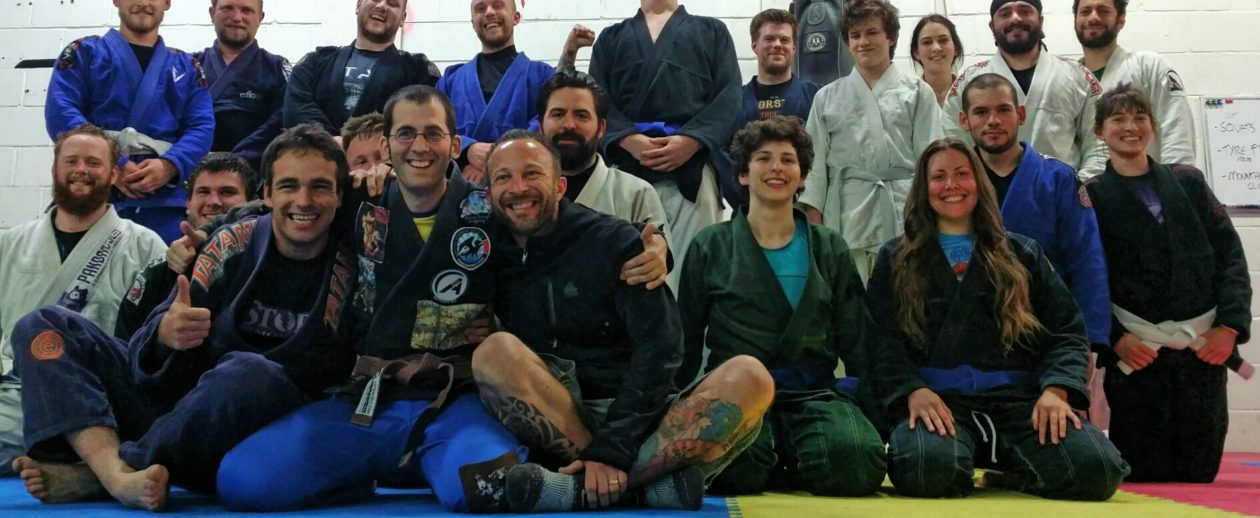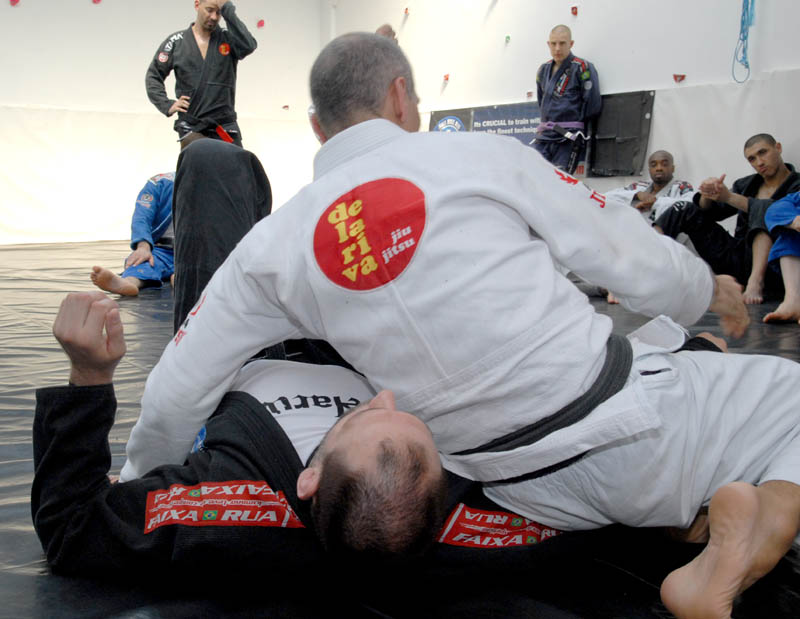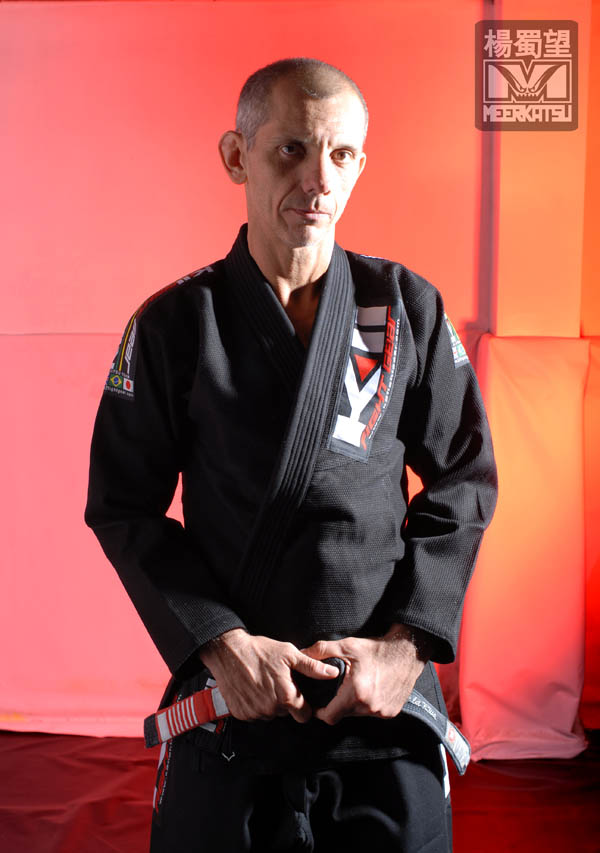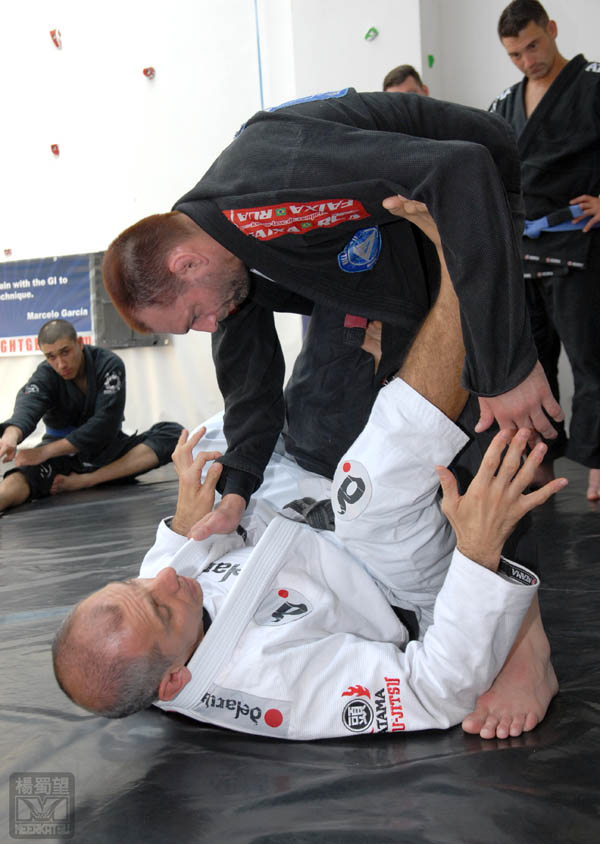Continuing our interview with Ricardo de la Riva (the first part is here), this week he talks about competing, women and the importance of training outside your own team. Sections of this interview appeared in Issue #004 of Jiu Jitsu Style and are reprinted with the kind permission of the editor.
ARTEMIS BJJ: I can remember in other interviews you’ve said that during your first competition as a black belt, you fought in both your weight and the absolute, beating Royce and Rolker Gracie along the way. How important do you think it is for smaller fighters to compete in the absolute as well as at their weight?
RICARDO DE LA RIVA: It is always a bit risky to fight in the absolute, in case you get injured. So some fighters, they are quite tactical, they are not going to fight in the absolute because they might get injured and then not be able to fight in their own category.
But if you feel you can do the absolute, why not? If you think you’re fit enough, you’ve trained hard enough, if you think you have a chance, why not?
ARTEMIS BJJ: Is that something that has helped you, competing in the absolute?
RICARDO DE LA RIVA: To be honest, I only fought once in the absolute: that first competition was the only time, and I won. In Carlson’s team, everyone was very big, heavy, strong. But in this competition alone, there was nobody my own size, so I had to go and fight the big guys as well. That was the only time.
ARTEMIS BJJ: Ah, so it is not something you would do much yourself, but you’d recommend other people try it, if they’re smaller?
RICARDO DE LA RIVA: Yes, if they’re fit enough and prepared. But that is not something I did, because there were normally so many people in my own category. I felt it wasn’t necessary for me to do the absolute, it wasn’t needed.
ARTEMIS BJJ: Back when you started your training, do you remember many women training as well, or was that unusual?
RICARDO DE LA RIVA: When I started to teach, I was teaching a group of fifteen year old girls, about fifteen of them. There was a time allocated just for girls at the academy. The difference now, even at my own academy, is that the girls are mixing with the boys. Previously they were a bit embarrassed or reluctant to join in with the boys, but now they are all in the same class. They are more confident. The girls are very keen to train, so have no problem training with the boys.
Jiu jitsu is very good for women, as it is a technical game. They benefit from it: it is good for the mind, the body. The moves don’t require much strength. You just have to relax a little bit, because sometimes when you walk up to a class, there are twenty men and only one woman. If they can overcome this first hurdle of sometimes being the only girl on the mat, then their jiu jitsu can really take off.
ARTEMIS BJJ: Did many of those fifteen year old girls that you taught continue in the sport, maybe up to black belt?
RICARDO DE LA RIVA: I have a number of students who went off to have families, but they came back. Some have achieved brown belt, purple belt, and there are also many beginners. Remember, Rio is a very sporty city, very active. To practice a sport like jiu jitsu is common. Everybody wants to be in shape, due to the beach, so both boys and girls are very active in sports.
ARTEMIS BJJ: For some time, I and various others have been trying to establish who the first female Brazilian jiu jitsu black belt was. The top contenders at the moment are Karla Gracie, Patricia Lage, and possibly Kim Gracie. There is also somebody who is apparently from your lineage, Carmem Casca Grossa. Do you have any thoughts on who it might have been?
[Note: BJJ Heroes has managed to finally answer that question, identifying Yvone Duarte as the first]
RICARDO DE LA RIVA: It definitely wasn’t Carmem Casca Grossa, she trains with me now, and may have got the black belt four or five years ago. There are other women who have got the black belt beforehand, but I’m not too sure who it may have been. Karla or Kim are a possibility, but I’m not sure.
There wasn’t any competition for women then, you see. It is a fairly recent thing, women competing. Thirty years ago, there were no women competing, so it is hard to know who the first women black belt was due to that. The women have a different weight category. So it is hard to really determine.
ARTEMIS BJJ: In judo, athletes fight for their country. What do you think are the good and bad things about the way BJJ is instead structured around teams, like Carlson, Gracie Barra, Alliance etc?
RICARDO DE LA RIVA: The disadvantage to this way is a ‘silent treatment’ that is very deeply rooted in jiu jitsu. You fight for your own academy. The down side of this, fighting for your own academy, you don’t get to know other games.
In the past, it was very, very serious. You would not be invited to go visit another academy. If you did, you would really suffer. You would not be welcomed: you would really have bad times, my friend! Everybody would frown at you, really want to have a go at you, solely because you’re from another academy.
The problem is that means you don’t get to fight with different people, to try different games. It is still deeply rooted, but it is getting better. So many foreigners come and train now, you have to look after them. It doesn’t matter where they train in their own country. I want to show my jiu jitsu, I want them to taste what my academy is like. Regardless whether they like it or not, they can have a go. At my academy, there is no politics.
The academy itself, you’re very patriotic about your academy. The country is a bit irrelevant: the flag is your academy. If I was Brazil, Carlson Gracie was Spain, it doesn’t matter. The ‘country flag’ is the logo of the academy you fight for, although of course I would be happy to fight for Brazil if that was an option.
Nowadays in some tournaments, regardless of who won, they take the Brazilians against the Spanish against the Americans, so they have teams fighting against other countries. So that’s starting to happen as well. This is very interesting.
ARTEMIS BJJ: People come to your academy from around the world to train with you, like Nick Brooks. So based on what you said above, presumably you think it is important for students to experience other teaching styles and training partners outside of their home academy?
RICARDO DE LA RIVA: It is good to see different styles, but ultimately people will come back to where they feel most welcome, most comfortable, where they feel they’re learning the most. My black belt student who came with me to England has been with me for twenty years. He did try going to other academies, but he ultimately came back to my academy.
It is like when you go on holiday. You try out various restaurants, you eat out in many places, but ultimately you’ll come back to the one you enjoy the most. In Copacabana, you have about fifteen or twenty different academies. If you want to go and try them all out, see their different styles, teaching, the atmosphere, why not? But you will eventually come back to the one that you belong to.
ARTEMIS BJJ: So you would encourage students to check out other places?
RICARDO DE LA RIVA: Of course, they should. Especially if they know people from other academies, they have friends training there. It is not like you are knocking on the door and challenging the instructor, as that isn’t very polite. But if you have friends who train in other academies, you should train with them.
It is not difficult to have friends in Rio who train in other academies. In the range of Copacabana, you are bound to know someone, who might invite you to train with them.
ARTEMIS BJJ: As we wrap things up, is there anything you’d like to say to the readers of this interview?
RICARDO DE LA RIVA: You can’t just be a dreamer. You have to believe in your dream. You have to really strive to reach your dream, with respect, dedication and humility. There are many aspects to success and achieving your dream. This triad, respect, dedication and humility, is what my family taught me, what jiu jitsu taught me and what I’d like to pass on to the readers.
I always respect my opponents, I’ve always been humble with my game, I’ve always worked really hard, staying humble along the way. It pays off. I learned that from my family, but jiu jitsu taught it to me too. Some days, you are at the top of your game, some days you are not so good, but keep persisting, keep working hard, with dedication, respect and humility. That transfers to your life outside the academy.
Photos by Seymour Yang and translation by David Soares. ‘Like’ the Artemis BJJ Facebook group to be notified about future interviews: for the archive, go here



